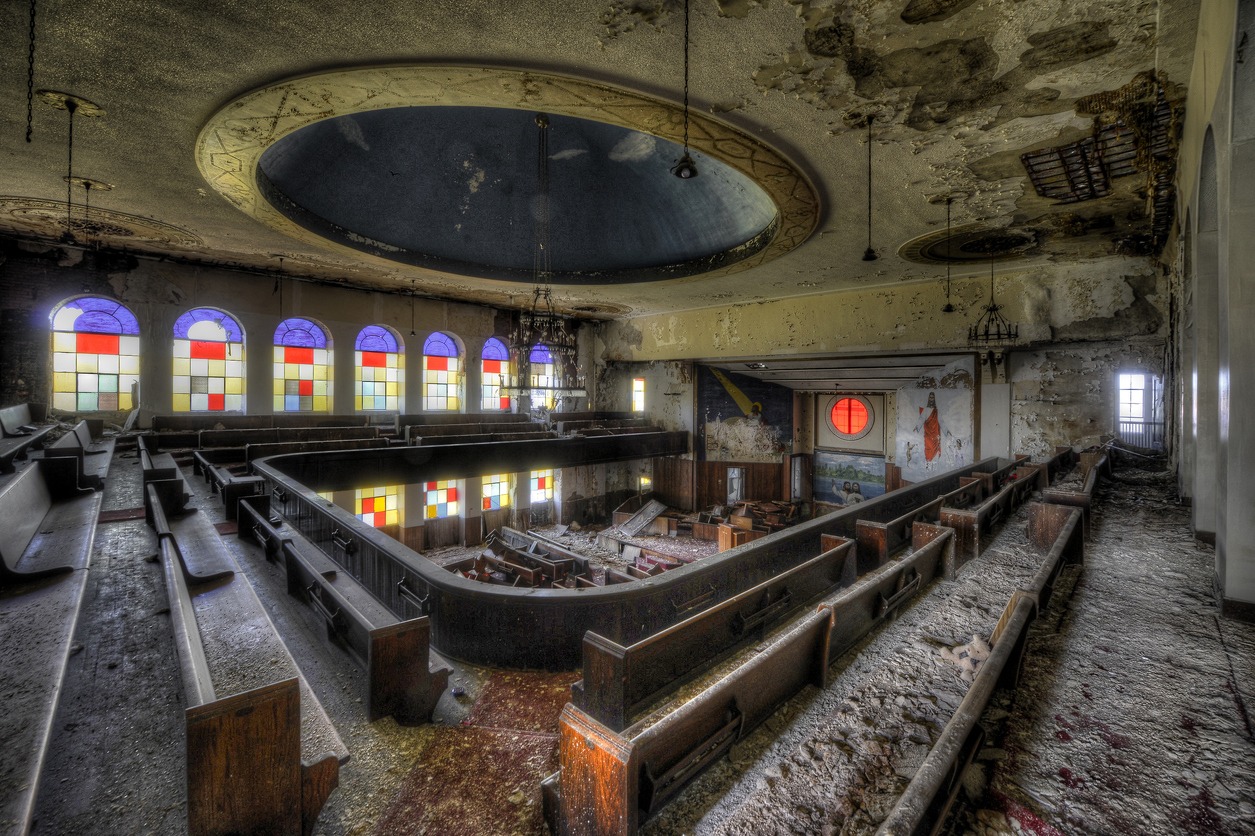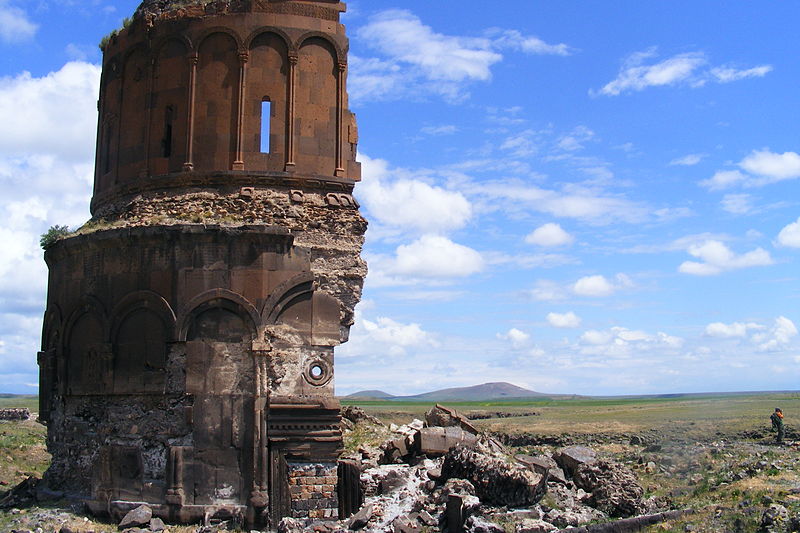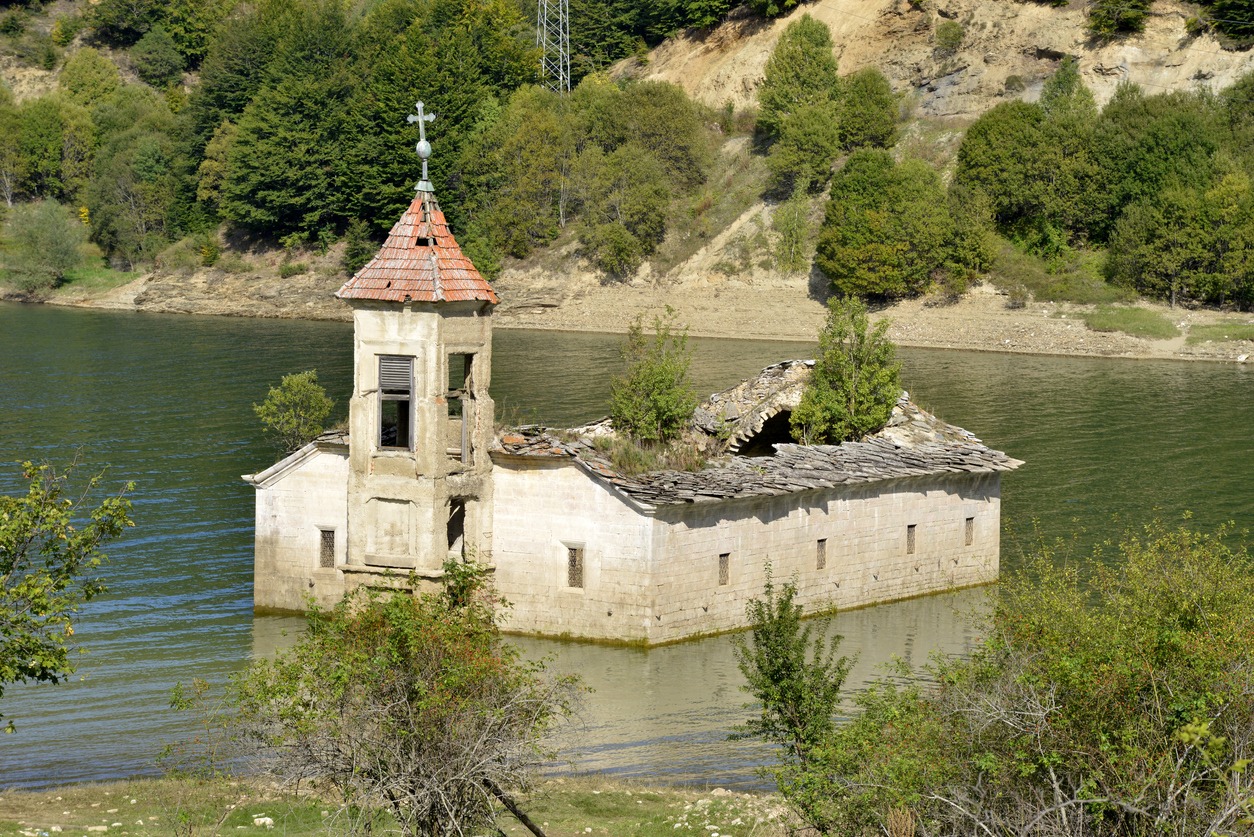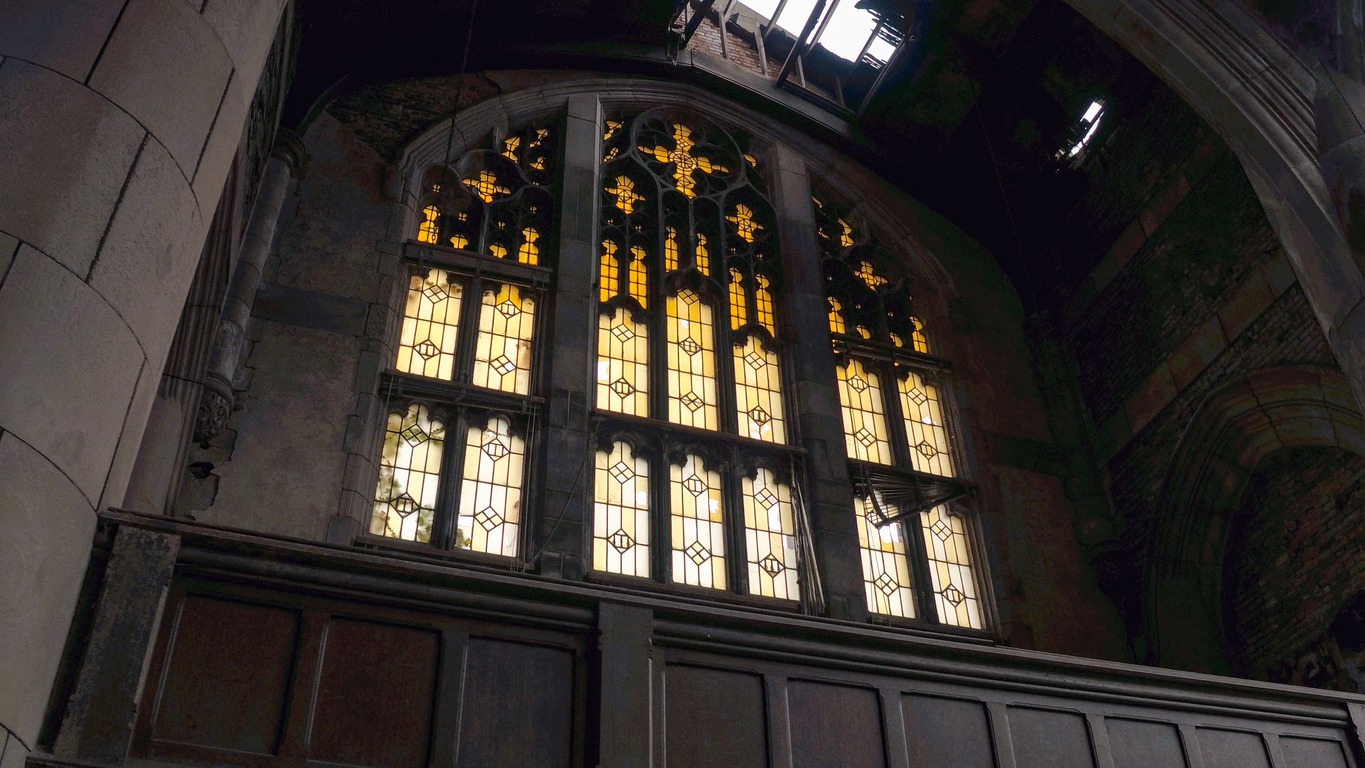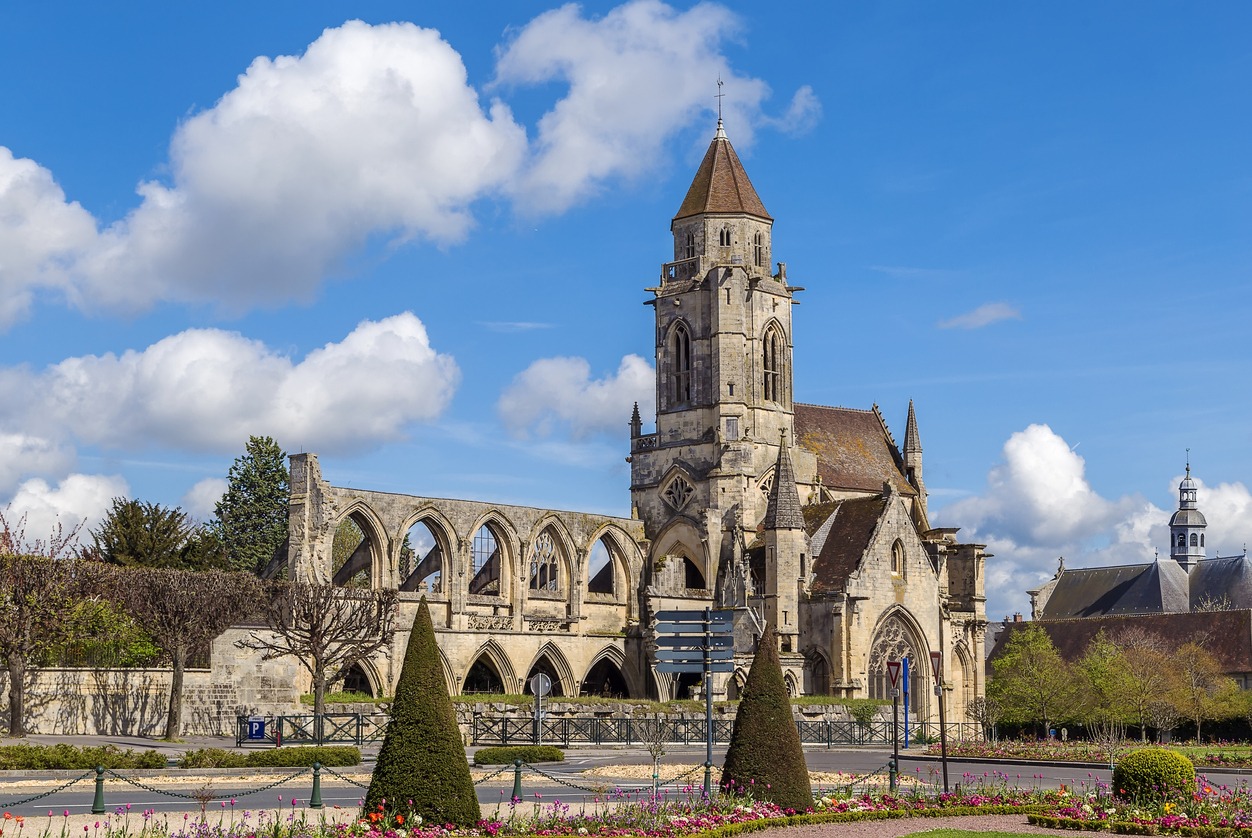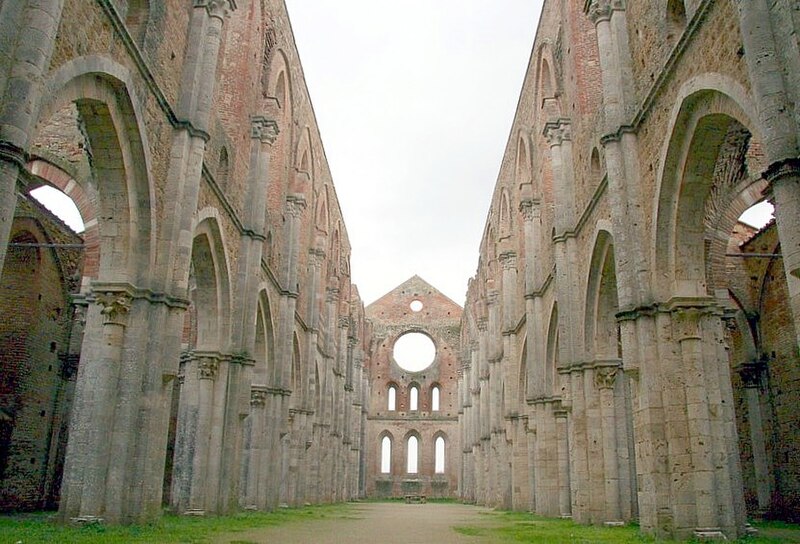Imagine a world where the echoes of hymns have faded, stained glass windows capture no prayers, and altars witness no gatherings. This is the world of abandoned churches scattered across the globe, each telling a tale as unique as the intricate patterns on their forsaken altars. These churches, once the heart of communities, now stand as solemn, haunting monuments to a bygone era. From the rolling hills of rural Europe with their medieval stone chapels to the forgotten wooden structures hidden in America’s countryside, these places of worship hold stories of faith, community, and the relentless march of time within their crumbling walls.
But what draws us to these silent sentinels of spirituality? Is it the appeal of their architectural splendor now contrasted against the inevitable decay? Or the touching beauty found in their quiet, reverent desolation? As we explore these abandoned sanctuaries, we find ourselves walking through history, witnessing the evolution of art, architecture, and human belief.
Join us on a journey through these hallowed yet forsaken halls, where every peeling paint and overgrown pathway tells a story of a different time, a different community, a different world.
St. George’s Church, Czech Republic
St. George’s Church in the Czech Republic, often referred to as the ‘ghost church,’ is an extraordinary site that has captured the imagination of visitors from around the globe. Nestled in the small village of Luková, this 14th-century church had been abandoned since the ceiling collapsed during a funeral service in 1968, leaving it in a state of eerie disrepair.
But what truly sets St. George’s Church apart is its congregation of ghosts – not real spirits, but rather an art installation by Czech artist Jakub Hadrava. These ghostly figures, seated in the pews of the church, are life-sized shrouds made of plaster and represent the German Bohemians who once lived in the village and attended the church. Hadrava’s work was part of a project to raise funds for the church’s restoration, and it certainly did the trick.
The installation not only brought attention to the church’s plight but also turned it into a fascinating tourist attraction. Visitors to St. George’s are treated to a hauntingly beautiful scene; the eerie figures bathed in the natural light that filters through the broken roof create a solemn, reflective atmosphere. This church, with its unique blend of history, art, and a touch of the supernatural, offers an unforgettable experience that goes beyond the traditional bounds of historical sites.
Church of the Holy Redeemer, Turkey
The Church of the Holy Redeemer, located in the hauntingly beautiful and ancient ghost city of Ani, on the border of Turkey and Armenia, is a captivating relic of medieval architecture. Constructed in the 11th century, this church is a testament to the rich history of Ani, once a bustling metropolis known as the “City of 1001 Churches” and now a UNESCO World Heritage site.
The Imperial Academy repaired a significant vertical crack in the church before World War I, which was most likely caused by seismic activity. However, due to the conflict, additional study and work were halted. The church was then cut in two by lightning in 1930. The church’s one side collapsed while the other remained standing, leaving the structure in an exceedingly vulnerable and unstable state.
Despite the ravages of time and history, the Church of the Holy Redeemer’s partial ruins stand majestically, with its unique conical dome catching the eye amidst the sprawling ruins of the city. What’s truly fascinating is the church’s intricate stonework, featuring delicate carvings and detailed frescoes, which hint at the grandeur of Ani’s golden age. For history buffs and explorers alike, a visit to this church is like stepping back in time. As you wander through the remnants of this ancient structure, you can almost hear the echoes of the past, from the solemn chants of monks to the bustling life of a long-lost city.
St. Nicholas Church, Macedonia
St. Nicholas Church in Macedonia offers a truly unique spectacle that beautifully intertwines history with nature. Situated in the picturesque region of Mavrovo, this 19th-century church finds itself partially submerged in Lake Mavrovo, creating an almost surreal scene that attracts photographers and travelers from far and wide.
Originally built to serve the local village, the church was submerged following the construction of a local hydroelectric dam in the 1950s, which led to the creation of the lake. What’s mesmerizing about St. Nicholas is how it changes with the seasons – during certain times of the year, especially when water levels are low, more of the church emerges from the lake, revealing its aged yet still magnificent structure. In winter, it presents a haunting image against the snowy backdrop, while in summer, it appears as a mysterious relic rising from the tranquil waters.
Visitors to St. Nicholas Church are treated to a poignant reminder of the past, as the church stands resiliently, partially submerged yet enduring, offering a unique blend of history, architecture, and the overwhelming power of nature.
Gary Methodist Church, USA
Gary Methodist Church in Gary, Indiana, is a striking example of how time and circumstance can transform a place of worship into a monument of urban decay and historical intrigue. Constructed in the early 20th century, during Gary’s heyday as a thriving steel town, this church was once a cornerstone of the community, renowned for its imposing Gothic architecture, including grand spires and intricate stained-glass windows.
However, as the city’s fortunes declined with the collapse of the steel industry, so too did the fate of the Gary Methodist Church. It was abandoned in the late 1970s, leaving it exposed to the elements and vandals, yet its skeletal frame continues to captivate urban explorers and photographers from around the world. Despite its dilapidated state, the church retains an air of solemn dignity. Its vast, empty sanctuary, with remnants of grandeur, speaks volumes about the city’s past glory and present struggles.
St. Etienne-le-Vieux, France
St. Etienne-le-Vieux, with its haunting remains in the heart of Caen, France, tells a story that is as dramatic as it is historic. Partially destroyed during the tumultuous events of World War II, particularly the Battle of Caen, this Gothic church dates back to the medieval period, once standing as a testament to the architectural ingenuity of the time.
Today, its ruins offer a poignant juxtaposition of past splendor and present decay. As you walk around St. Etienne-le-Vieux, you can’t help but be captivated by the skeletal remains of its once-grand arches and the stark open sky where a roof would have been. The church’s damaged yet still-standing walls, marked by the scars of war, evoke a profound sense of resilience amidst destruction. This site has become a magnet for history enthusiasts and photographers, drawn to the eerie beauty of its ruins and the powerful narrative they embody.
Rosslyn Chapel, Scotland
Rosslyn Chapel, nestled in the rolling hills near Edinburgh, Scotland, is a site shrouded in as much mystery as it is beauty. Officially known as the Collegiate Chapel of St Matthew, this 15th-century chapel rose to modern fame with Dan Brown’s novel “The Da Vinci Code,” but its allure extends far beyond pop culture.
Renowned for its intricate carvings and richly detailed interior, the chapel is a masterpiece of Gothic architecture. Each pillar, window, and archway tell a story steeped in the lore of the Sinclair family who founded it. The most famous of these is the Apprentice Pillar, an ornately carved column surrounded by legends of rivalry and craftsmanship. Walking through Rosslyn Chapel, you can’t help but feel a sense of awe at the sheer intricacy of the stonework, which some believe holds secret messages or even a hidden treasure.
But it’s not just the architecture that captivates visitors; the chapel is enveloped in myths and legends, from connections to the Knights Templar to alleged links to the Holy Grail. Whether you’re a history buff, architecture enthusiast, or just someone seeking a glimpse into Scotland’s mystical past, Rosslyn Chapel offers an enchanting experience that leaves visitors with more questions than answers and a desire to uncover the secrets held within its ancient walls.
The Abbey of San Galgano, Italy
The Abbey of San Galgano, nestled in the picturesque hills of Tuscany, Italy, offers a breathtaking glimpse into the past with a unique twist. This 13th-century Cistercian monastery, named after the legendary knight-turned-saint Galgano Guidotti, stands out for a feature you might not expect in an abbey: it has no roof. This open-air structure creates a mesmerizing blend of architecture and nature, where the sky becomes a part of the abbey’s fabric.
Walking through its expansive, grass-covered nave, you’re struck by the stark beauty of the Gothic arches and columns reaching up into the open blue, a scene that artists and photographers dream of. The Abbey of San Galgano is not just an architectural wonder; it’s steeped in myth and history. The story goes that Saint Galgano thrust his sword into a rock nearby, a symbol of his renunciation of violence, and this sword can still be seen today at the nearby Montesiepi Chapel.
Visiting the Abbey of San Galgano is a truly unique experience – it’s a place where history, legend, and natural beauty intertwine to create an atmosphere that’s both serene and surreal. This majestic ruin, standing proudly in its decay, offers a peaceful yet poignant reminder of the transitory nature of worldly splendor and the enduring power of faith and nature.
Holy Trinity Church, England
Holy Trinity Church in Buckfastleigh, Devon, England, is steeped in an ambiance that’s as mysterious as it is historic. This medieval church, now largely in ruins due to a devastating fire in 1992, is famous not only for its Gothic architecture but also for the intriguing legends that surround it. One such tale is that of the squire Cabell, said to have been a nefarious figure during his life and whose tomb on the church grounds is shrouded in tales of ghostly happenings and a pack of phantom hounds.
These stories even inspired Arthur Conan Doyle’s classic “The Hound of the Baskervilles.” Walking through the ruins of Holy Trinity, with its weathered gravestones and overgrown ivy, there’s an eerie yet captivating sense of the past lingering in the air. The church’s partially standing structure, with its open sky views, offers a hauntingly beautiful scene, especially during the twilight hours. It’s a place that doesn’t just embody the architectural grandeur of England’s religious history but also captures the imagination with its folklore and local myths.
Conclusion
These ancient sanctuaries, from the Gothic ruins of Holy Trinity Church in England to the roofless majesty of San Galgano in Italy, tell stories richer than any novel. They remind us not only of the relentless passage of time but also of the enduring spirit of human faith and artistry. Each church, with its unique history and mystique, stands as a testament to the communities that once thrived around them, the architects who envisioned them, and the countless congregants who sought solace within their walls.
Whether you’re drawn to these sites for their architectural beauty, their historical significance, or the eerie allure of their legends, one thing is certain: the echoes of the past that resonate within these abandoned churches continue to captivate and inspire us, beckoning us to explore and remember.

